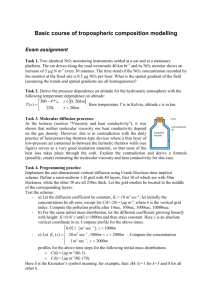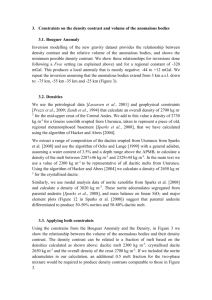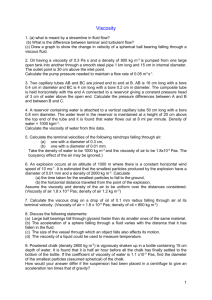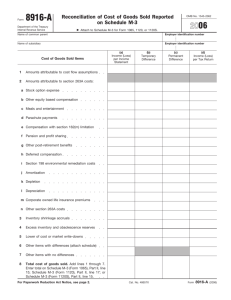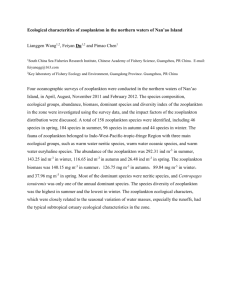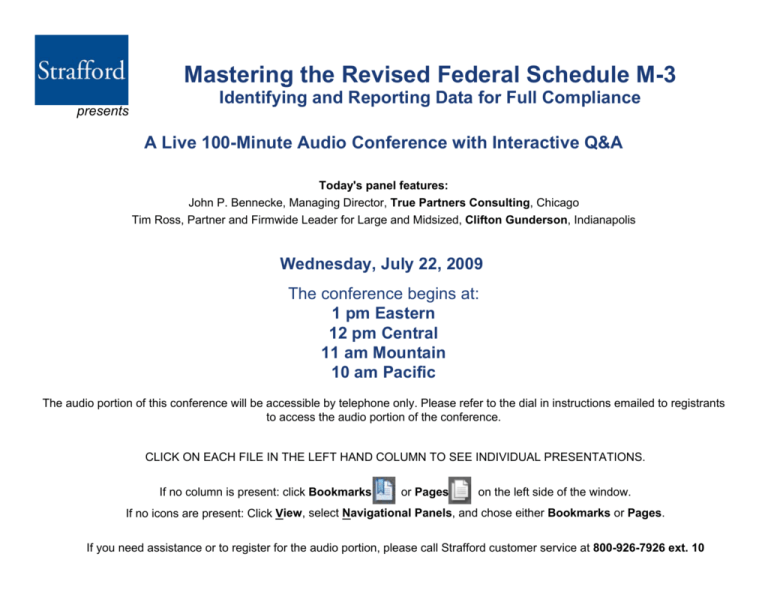
Mastering the Revised Federal Schedule M-3
presents
Identifying and Reporting Data for Full Compliance
A Live 100-Minute Audio Conference with Interactive Q&A
Today's panel features:
John P. Bennecke, Managing Director, True Partners Consulting, Chicago
Tim Ross, Partner and Firmwide Leader for Large and Midsized, Clifton Gunderson, Indianapolis
Wednesday, July 22, 2009
The conference begins at:
1 pm Eastern
12 pm Central
11 am Mountain
10 am Pacific
The audio portion of this conference will be accessible by telephone only. Please refer to the dial in instructions emailed to registrants
to access the audio portion of the conference.
CLICK ON EACH FILE IN THE LEFT HAND COLUMN TO SEE INDIVIDUAL PRESENTATIONS.
If no column is present: click Bookmarks
or Pages
on the left side of the window.
If no icons are present: Click View, select Navigational Panels, and chose either Bookmarks or Pages.
If you need assistance or to register for the audio portion, please call Strafford customer service at 800-926-7926 ext. 10
Mastering The Revised Federal Schedule
M-3 Teleconference
July 22, 2009
John P. Bennecke – Managing Director
John.Bennecke@TPCtax.com
Schedule M-3: A Historical
Perspective
©2009 True Partners Consulting LLC. All rights reserved. Printed in the U.S.A.
2
Schedule M-3
A Historical Perspective
•Back in 2004, the Treasury Department and IRS released IR 2004-14,
seeking comments on the proposed Form 1120, Schedule M-3
•The Schedule M-3 was developed in order to provide for increased
transparency in corporate tax returns filed, and to allow for consistency in
tax reporting among corporations
•Draft form and instructions were released on March 11,2004, to be
effective for years ending Dec. 31, 2004, for taxpayers with total assets in
excess of $10 million
•Schedule M-3 was first required to be filed by qualifying C corporations,
with the reporting requirement expanded to S corporations and partnerships
in subsequent years
©2009 True Partners Consulting LLC. All rights reserved. Printed in the U.S.A.
3
Schedule M-3
A Historical Perspective
•Reportable transactions: Schedule M-3 provides an alternative disclosure
procedure for obligations covered under Treasury Reg. 1.6011-4, for items
with significant book tax differences (See Rev. Proc. 2004-45)
The requirement of Schedule M-3 sets the stage for the era of increased
transparency in tax reporting, and provides a more direct tie into the
financial reporting requirements of corporations, S corporations and
partnerships. Schedule M-3 has been revised several times since its
inception in 2004, and has strived to increase the level of reporting required
and to allow for increased consistency among taxpayers and their respective
entities
©2009 True Partners Consulting LLC. All rights reserved. Printed in the U.S.A.
4
Role Of M-3 In The Environment
Of Transparency
©2009 True Partners Consulting LLC. All rights reserved. Printed in the U.S.A.
5
Role Of Schedule M-3 And The Environment
Of Transparency
Tax reporting/compliance
Increased reporting requirements in the era of Schedule M-3
Direct tie into financial reporting world
More-focused IRS exams
Facilitates more focused issue identification: Limited issue focused exams
(LIFEs)
Standardization of tax reporting
E-filing: Leads the way for standardization in an e-filing environment
©2009 True Partners Consulting LLC. All rights reserved. Printed in the U.S.A.
6
Role Of Schedule M-3 And The Environment
Of Transparency (Cont.)
Financial reporting
• Schedule M-3 provides a direct correlation and tie-in to the financial statements
of the reporting entity
• SEC filings
• Audited financials
• Unaudited financials/compilations
• Requires a reconciliation between financial statements and tax returns
• Schedule M-3 requires reporting consistent with the concepts of FAS
109, Accounting for Income Taxes. ( Part III lines 1 – 6 )
•
FIN 48 (Disclosure of Uncertain Tax Positions)
• Public company
• Private company (effective for years ending on or after Dec. 31, 2009)
©2009 True Partners Consulting LLC. All rights reserved. Printed in the U.S.A.
7
2008 Updates: An Overview Of
Schedule M3 By Entity Type
©2009 True Partners Consulting LLC. All rights reserved. Printed in the U.S.A.
8
2008 Updates – What’s New
Overview Of Sch. M-3 ( By Entity Type )
Form 1120: Net income (loss) reconciliation for corporations with total
assets of $10 million or more
Form 1120S: Net income (loss) reconciliation for corporations with total
assets of $10 million or more
Form 1065: Net income (loss) reconciliation for certain partnerships
©2009 True Partners Consulting LLC. All rights reserved. Printed in the U.S.A.
9
2008 Form 1120
•
Overview of Schedule M-3
• Who must complete
• Any domestic corporation or consolidated group filing Form 1120 whose total assets equal
to or exceed $10 million dollars or
• Any U.S. corporation filing Form 1120 may voluntarily complete Schedule M-3 instead of
Schedule M-1
• A corporation completing Schedule M-3, whether required or voluntary, must check Item A,
box 4 on page 1 of Form 1120 indicating Schedule M-3 is attached
• Part I
• Reconcile worldwide financial statement income/(loss) for a consolidated group or separate
corporation reported on line 4a to net income/(loss) of the corporation for U.S. taxable
income purposes, as reported on line 11
• Parts II and III
• Reconcile the corporation’s U.S. income/(loss) per the financial statements reported on Part
I, line 11 to U.S. taxable income/(loss) reported on Form 1120, page 1, line 28
What’s New for 2008
• Form 1120, Schedule K
• New Schedule B for Schedule M-3 filers
• Changes made to Schedule M-3
©2009 True Partners Consulting LLC. All rights reserved. Printed in the U.S.A.
10
2008 Form 1120 (Cont.)
Form 1120, Schedule K – Other information
Additional information is reported for direct and indirect ownerships
Questions 4 and 5
Request direct ownership of 20% or more
In the past, corporations were only required to disclose
direct or indirect ownership of their voting stock of 50% or
more
©2009 True Partners Consulting LLC. All rights reserved. Printed in the U.S.A.
11
2008 Form 1120 (Cont.)
Schedule M-3, Schedule B
Required for all Schedule M-3 filers
Additional information related to the reconciliation of worldwide
income/(loss) per the financial statements to net income/(loss) required to
U.S. income tax reporting
To support reconciliation of Part 1, lines 4a through line 11
The questions relate to:
Partnership allocations that are disproportionate to a corporation’s
ownership percentage
Related party transactions defined in §267(b)
Cost-sharing arrangement with a related foreign party which the
corporation has not filed Form 5471
Accounting method changes for GAAP (SFAS 154) and tax purposes
VEBA trusts that were used to hold funds for employee benefits
Allocation of mixed-service costs that do not conform to the Federal
Energy Regulatory Commission’s method
©2009 True Partners Consulting LLC. All rights reserved. Printed in the U.S.A.
12
2008 Form 1120 (Cont.)
Schedule M-3
Part I, line 4b (new): Which of the following accounting standards is
used to compute worldwide net income/(loss) for financial reporting
purposes
GAAP
IFRS
Statutory
Tax basis
Other (specify)
©2009 True Partners Consulting LLC. All rights reserved. Printed in the U.S.A.
13
2008 Form 1120 (Cont.)
Schedule M-3 (Cont.)
Part I, line 7
There are three sub-categories for a foreign disregarded entity
that is not included in worldwide net income/(loss) per the
financial statements (Part I, line 4a), but is included in the
calculation of U.S. book income/(loss) (Part I, line 11)
Foreign disregarded entities
U.S. disregarded entities
Other includible entities
©2009 True Partners Consulting LLC. All rights reserved. Printed in the U.S.A.
14
2008 Form 1120 (Cont.)
Schedule M-3 (Cont.)
Part I, line 11 includes a note for 2008 that net income/(loss) should
equal the amounts on Part II, line 30 of column (a) and Schedule M2, line 2
Part I, line 12 (new)
Report the total assets and liabilities of all the entities included
or removed (Part I, lines 4 through 7) in the reconciliation of net
income/(loss)
©2009 True Partners Consulting LLC. All rights reserved. Printed in the U.S.A.
15
2008 Form 1120S
Overview of Schedule M-3
Who must complete
Any corporation required to file Form 1120S whose total assets are equal to or
exceed $10 million or
Any corporation filing Form 1120S can voluntarily complete Schedule M-3 instead
of Schedule M-1
Whether required or voluntary, if Schedule M-3 is completed the corporation must
check the box on page 1 of Form 1120S, item C, indicating Schedule M-3 is
attached
Part I
Reconcile worldwide financial statement income/(loss) for a consolidated group or
separate corporation reported on line 4a to net income/(loss) of the corporation for
U.S. taxable income purposes, as reported on line 11.
Parts II and III
Reconcile the corporation’s U.S. income/(loss) per the financial statements reported
on Part I, line 11 to U.S. taxable income/(loss) reported on Form 1120, page 1, line
28
What’s new for the 2008 tax year
Changes made to Schedule M-3
©2009 True Partners Consulting LLC. All rights reserved. Printed in the U.S.A.
16
2008 Form 1120S (Cont.)
Schedule M-3
Part I, line 4b (new): Which accounting standards is used to
compute worldwide net income/(loss) for financial reporting
purposes
GAAP
IFRS
Tax basis
Other (specify)
* Similar change as Form 1120 but excludes statutory option
©2009 True Partners Consulting LLC. All rights reserved. Printed in the U.S.A.
17
2008 Form 1120S (Cont.)
Schedule M-3 (Cont.)
Part I, line 7 (similar to Form 1120)
Lists the three sub-categories for a foreign disregarded entity not
included in worldwide net income/(loss) per the financial
statements (Part I, line 4a) but is included in the calculation of
U.S. book income/(loss) (Part I, line 11)
Foreign disregarded entities
U.S. disregarded entities
Other includible entities
©2009 True Partners Consulting LLC. All rights reserved. Printed in the U.S.A.
18
2008 Form 1120S (Cont.)
Schedule M-3 (Cont.)
Part I, line 11 includes a note for 2008 that net income/(loss) must
equal the amounts on Part II, line 26 of column (a)
Part I, line 12 (new)
Report total assets and liabilities of all entities included or
removed (Part I, lines 4 through 7) in the reconciliation of net
income/(loss) reported on Part I, line 11
©2009 True Partners Consulting LLC. All rights reserved. Printed in the U.S.A.
19
2008 Form 1065
Overview of Schedule M-3
Purpose of Schedule M-3
To show transparency between net income/(loss) on the financial statements and net
income/(loss) of partnership found on page 5 of Form 1065
Who must complete
An entity required to file Form 1065 whose total assets or adjusted total assets are equal to or
exceed $10 million
The partnership’s total assets at the end of the tax year must be determined on an overall
accrual method unless both of the following apply:
The tax return is prepared using the cash method and
The entity does not prepare financial statements using, and is not included in
financial statements prepared on, an accrual basis
An entity filing Form 1065 can voluntarily complete Schedule M-3 instead of Schedule M-1
The entity’s total receipts is equal to or greater than $35 million or
An entity that is a reportable entity partner within the partnership owns or is deemed to own,
directly or indirectly, 50% or more in the partnership’s capital, profit or loss
Whether required or voluntary, if Schedule M-3 is completed the partnership must check the box
on page 1, Line J of Form 1065, indicating Schedule M-3 is attached
What’s new for the 2008 tax year
Form 1065
New Schedule C
Changes to Schedule M-3
©2009 True Partners Consulting LLC. All rights reserved. Printed in the U.S.A.
20
2008 Form 1065 (Cont.)
What’s new for the 2008 tax year
Page 1, line G, box 6 is a new checkbox for partnerships to file an initial and final return under the
technical terminations rules
Revised Schedule B
Constructive ownership of the partnership
Line 3a and 3b – detail of partners, under section 267(c), who own directly or indirectly
50% or more of the partnerships capital, profit or loss
Line 4a – detail required if the partnership owns directly 20% or 50% or more, directly or
indirectly, the voting stock of a foreign or domestic corporation
Line 4b – detail required if the partnership owns directly 20% or 50% or more, directly or
indirectly, in capital, profit or loss of a foreign or domestic partnership
Line 6d states the partnership is not filing or is not required to file Schedule M-3
Line 8 relates to the cancellation, forgiveness or modification of debt which in turn the
partnership will recognize income which is separately stated on Schedule K
Line 12c relates to a basis reduction under §734(b) or 743(b) due to a substantial built-in loss. If
the answer is “Yes” a statement is required to be attached showing the computation and
allocation of the basis adjustment
Line 13 asks whether the partnership, during the current or prior year, distributed property
received in a LKE or contributed LKE property to another entity (including a disregarded entity)
Line 14 asks about the distribution to a partner a tenancy-in-common or other undivided interest
in partnership property
Line 15 asks for the number of Form 8858 required to be filed by the partnership
©2009 True Partners Consulting LLC. All rights reserved. Printed in the U.S.A.
21
2008 Form 1065 (Cont.)
New Schedule C
Required for all Schedule M-3 filers
This schedule provides additional information regarding financial transactions
by the partnership of which the taxpayer is a member. The transactions
included are:
Transfers governed under Reg. 1.707-8 that require disclosure
Disproportionate allocations of income/(loss) from the partnership’s
investments
The acquisition, sale, exchange or transfer of any interest in an intangible
asset from/to a related party as defined under §267(b) and 707(b)(1); and
Changes in accounting principles for financial accounting reporting and
U.S. income tax purposes
©2009 True Partners Consulting LLC. All rights reserved. Printed in the U.S.A.
22
2008 Form 1065 (Cont.)
Schedule M-3
Part I, line 4b (new): Which of the following accounting standards is
used to compute worldwide net income/(loss) for financial reporting
purposes
GAAP
IFRS
704(b)
Tax basis
Other (specify)
©2009 True Partners Consulting LLC. All rights reserved. Printed in the U.S.A.
23
2008 Form 1065 (Cont.)
Schedule M-3 (Cont.)
Part I, line 11 includes a note for 2008 that net income/(loss) should
equal the amounts on Part II, line 26 of column (a)
Part I, line 12 (new)
Report the total assets and liabilities of all the entities included
or removed (Part I, lines 4 through 7) in the reconciliation of net
income/(loss)
©2009 True Partners Consulting LLC. All rights reserved. Printed in the U.S.A.
24
2008 Form 8916-A
Overview of Form 8916-A
Purpose of this form is to provide a detailed schedule of the amounts
reported on the applicable Schedule M-3 for cost of goods sold, interest
income and interest expense.
Who must complete
If an entity completes Schedule M-3 for Forms 1120, 1065, 1065-B, 1120L, 1120-PC and 1120S
Form 8916-A must be completed for:
Each separate entity required to file Schedule M-3
For consolidated tax return filers:
Consolidated entity
Eliminations company
Parent entity
Each subsidiary
©2009 True Partners Consulting LLC. All rights reserved. Printed in the U.S.A.
25
2008 Form 8916-A (Cont.)
Overview of Form 8916-A (Cont.)
Part I. Cost of goods sold
Line 1, Amounts attributable to cost flow assumptions
An example is the differences between LIFO reserves for book
and tax purposes
Line 2 has an extensive list of adjustments
Stock option expense
Meals and entertainment
§162(m) compensation limitation
Amortization
Depreciation
Line 6, Other items with differences
A schedule must be attached for any adjustments not listed on
lines 1 through 5. An example is the break-out of accrued
vacation affecting both cost of labor and SG&A expenses
©2009 True Partners Consulting LLC. All rights reserved. Printed in the U.S.A.
26
2008 Form 8916-A (Cont.)
Overview of Form 8916-A (Cont.)
Part II. Interest income
Line 1: Report §103, state and local tax-exempt interest income
Line 2: Report interest income from a hybrid and related party debt
Line 3: Report interest income from periodic payments from transactions
characterized as a lease for book purposes, in column (a), and as a sale for
tax purposes, in column (d)
Line 4a: Report intercompany interest income from an entity included on
Schedule M-3, Part I, line 4 but not included on Schedule M-3, Part I, line
11
Line 4b: Report total intercompany interest income from an entity within
the affiliated group
Line 5: Report interest income not required to be reported on lines 1
through 4b
Line 6: Total interest income must reconcile to Schedule M-3, Part II,
either line 11 or line 13 (depending which tax form is completed)
©2009 True Partners Consulting LLC. All rights reserved. Printed in the U.S.A.
27
2008 Form 8916-A (Cont.)
Overview of Form 8916-A (Cont.)
Part III. Interest expense
Line 1: Column (a) is the total interest expense from hybrid securities characterized
as debt for financial purposes and column (d) as equity for tax purposes
Report interest expense from a debt that is both hybrid and related party debt
on line 1 and not on line 3a or 3b
Line 2: Report in column (a) interest expense from periodic payments from
transactions characterized as a lease for financial purposes and as a purchase for tax.
Report in column (d) total interest expense from periodic payments from
transactions characterized as a purchase for financial purposes and as a lease for tax.
Line 3a: Report total intercompany interest expense included on Schedule M-3, Part
I, line 4 but not included on Schedule M-3, Part I, line 11
Line 3b: Report total intercompany interest expense to an entity within the affiliated
group
Line 4: Report total interest expense not required to be reported on lines 1 through
3b
Line 5 must reconcile to Schedule M-3, Part III where interest expense is being
reported
©2009 True Partners Consulting LLC. All rights reserved. Printed in the U.S.A.
28
Mastering The Revised
Schedule M-3
Teleconference
July 22, 2009
Tim Ross, Clifton Gunderson
Tim.Ross@cliftoncpa.com
New Forms, Schedules, Issues For
Form 1120-F Filers
2
Form 1120-F
•
Form 1120-F must be filed by a foreign corporation that:
– Was engaged in a trade or business in the U.S.;
– Had income that was effectively connected with the conduct of a
U.S. trade or business under Sect. 864; or
– Had U.S.-source income (FDAP) that was not effectively
connected with the conduct of a U.S. trade or business under Sect.
881, even if that income was tax-exempt, based on an income tax
treaty between the U.S. and the foreign country or based on a Code
section
– “FDAP” refers to the gross amount of U.S. non-business income
(or investment-type income) that is “fixed or determinable, annual,
or periodic” and is subject to withholding of tax at a rate of 30% or
lower under treaty
3
Form 1120-F, Schedule H
•
Deductions allocated to effectively connected income under
regulations Sect. 1.861-8
– Calculates direct and indirect allocation and apportionment of
deductions to income effectively connected with the conduct of a
U.S. trade or business
• Effectively connected income (ECI)
– Discloses the underlying methods and records used to do so
– Total deductions allocated and apportioned to ECI are reported on
line 21 of Schedule H and are also entered on section II, line 26
(calculation of ECI) of Form 1120-F
4
Form 1120-F, Schedule I
•
Interest expense allocation under regulations Sect. 1.882-5
– Calculates interest expense allocable to ECI and the total interest
expense deduction allowed
– Total interest expense deduction as calculated is reported on line
25 of Schedule I and is also entered on section II, line 18
(calculation of ECI) of Form 1120-F
5
Form 1120-F, Schedule P
•
List of foreign partner interests in partnerships
– Discloses the foreign corporation’s ownership in U.S. partnerships
and foreign partnerships with ECI
– Reconciles income and expenses to Schedule K-1 of Form 1065
– Calculates the foreign corporation’s outside basis in each
partnership allocable to ECI
6
Schedules M-1 And M-2
•
Schedules M-1 and M-2 were moved from page 6 of 1120-F and are
now a separate form
•
Schedule M-1 is only filed by those companies with less than $10
million in total assets
•
Schedule M-2 is filed by all 1120-F filers
7
Form 1120-F And Schedule M-3
•
Any foreign corporation required to file 1120-F that has total assets of
greater than $10 million must complete and file Schedule M-3
– Assets measured at the end of the corporation’s tax year
– Total assets as reported on Schedule L, line 17
– Schedule M-3 is filed in lieu of Schedule M-1
8
Requirements For More Information
From Foreign Companies
•
Environment is such that the IRS will continue to expand reporting
requirements for foreign business entities
•
Ownership and related party disclosures
•
Arm’s length transactions
•
Transfer pricing in general
•
Use of “Tier One” issue nomenclature
– Foreign tax credit generators
9
Form 8916-A
•
Interest income and expense
– Requires more detail for differences between book and tax interest
– Part II – Interest income
– Part II – Interest expense
10
M-3 And Partnership Issues
11
Who Must File?
• Total assets of $10 Million or more as of the end of the tax
year, as reported on Schedule L
• Adjusted total assets equal to or in excess of $10 Million
or more as of the end of the tax year
• Gross receipts of $35 million or more for the tax year
• The partnership has a reportable entity partner that must
also file schedule M-3
12
Schedule L Issues
•
Schedule L must be prepared on a non-tax basis (ex:GAAP) if non-tax
financial statements were prepared for any purpose during the tax year
•
If not, then Schedule L must be prepared using the partnership’s books
and records
•
Total assets used for Schedule L must be the same total assets reported
in the financial statements used to prepare Schedule M-3
13
Adjusted Total Assets
•
Defined as:
– Total assets as reported on line 14 of Schedule L, plus
– Any distributions for the year on lines 6a or 6b of Schedule M-2,
plus
– Any adjustments to capital reported on lines 4 or 7 of Schedule M2
•
In theory, this is to prevent partnerships from purposely avoiding the
$10 million threshold
14
Guaranteed Payments
•
Schedule M-3, part III, line 9
•
Requires separate disclosure of guaranteed payments
– Payments treated as expense
– Payments capitalized by the partnership
– Payments received (income) by the partnership as a partner in
another partnership
15
Reportable Entity Partners
•
Reportable entity partner (REP) is a partner who:
– Owns or is deemed to own 50% or greater interest in income, loss,
or capital; and
– Was required to file Schedule M-3
•
Reports made by the REPs must be retained by both the REP and the
partnership
16
Reportable Entity Partners (Cont.)
•
Report must be made to the partnership within 30 days of first
becoming a REP
•
Because of the indirect ownership rules, Schedule L reporting and the
adjusted total asset rule, partnerships with low activity or assets may
be required to file Schedule M-3
17
Other Issues
•
Be sure to file Form 8916-A
•
Form 1065, Schedule C
– New for tax year 2008, requiring further disclosures
– E.g.: Did the partnership make any change in accounting method
for financial statement purposes?
– The questions are tailored to glean information on asset transfer,
financial accounting method changes, cost sharing arrangements,
and other similar issues
18
What Can We Expect Going
Forward?
19
What Can We Expect?
•
Schedule M-3 is a window into the Service’s concerns
•
Expect the “Schedule M-3” concept to continue to be expanded
•
Note that Schedule C is now going outside of book to tax
reconciliation, and requiring information as to specific transactions
•
One concern: The number of changes being made each year may affect
tax compliance software updates
20
What Can We Expect (Cont.)
•
Read “Update on Reducing the Federal Tax Gap and Improving
Voluntary Compliance” (Treasury Report)
•
The IRs will continue to “tweak” the Schedule M-3
– Trends and issues identified during examinations
– Disclosures that will further decrease examination time required
– Changes in tax law
– Changes in business practices
21
Form 1120, Schedule M-3:
http://www.irs.gov/pub/irs-pdf/f1120sm3.pdf
Instructions:
http://www.irs.gov/pub/irs-pdf/i1120sm3.pdf
Form 1065, Schedule M-3:
http://www.irs.gov/pub/irs-pdf/f1065sm3.pdf
Instructions:
http://www.irs.gov/pub/irs-pdf/i1065sm3.pdf
Form 1120-S, Schedule M-3:
http://www.irs.gov/pub/irs-pdf/f1120ss3.pdf
Instructions:
http://www.irs.gov/pub/irs-pdf/i1120ss3.pdf
Form 1120-F, Schedule M-3:
http://www.irs.gov/pub/irs-pdf/f1120fm3.pdf
Instructions:
http://www.irs.gov/pub/irs-pdf/i1120fm3.pdf

